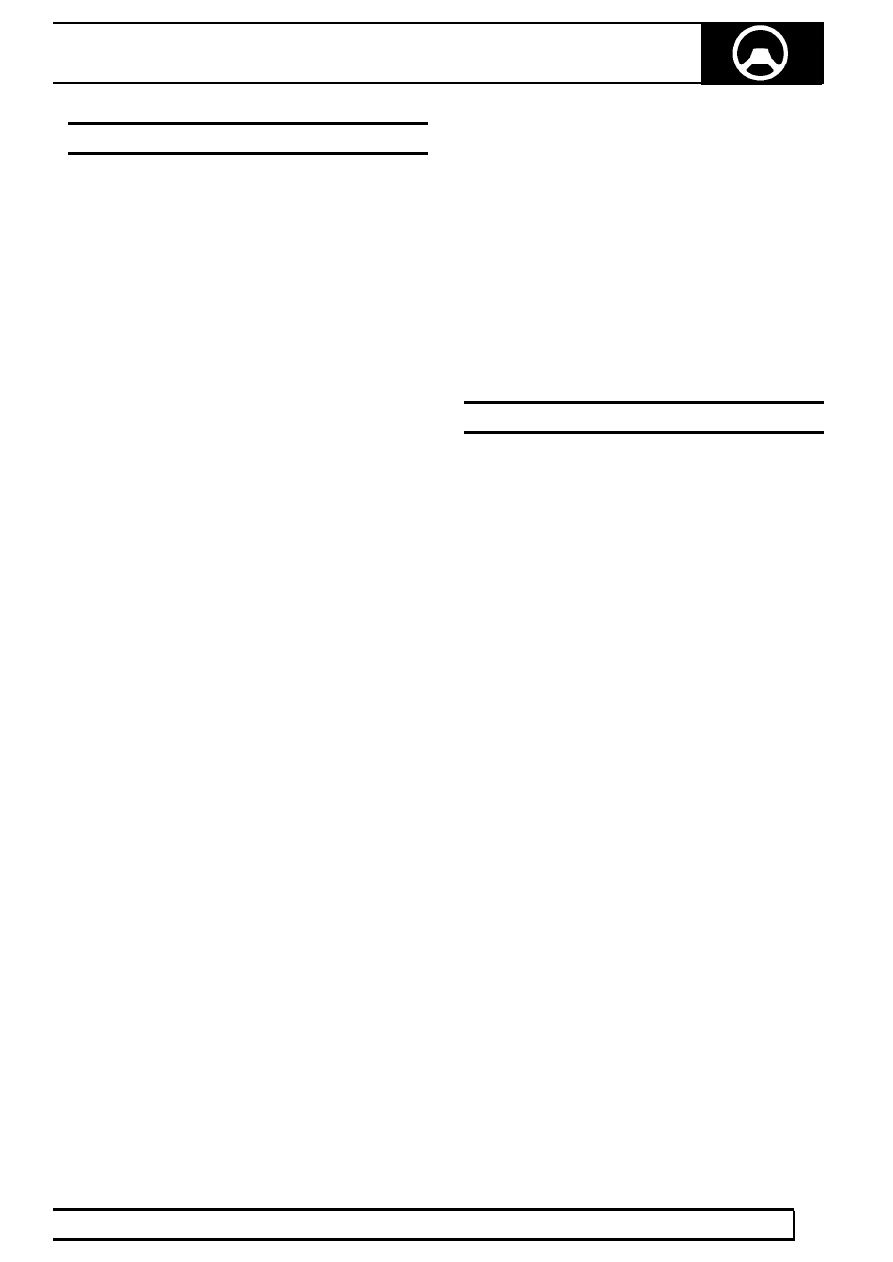Land Rover Discovery. Manual - part 134

STEERING
9
FAULT DIAGNOSIS
POWER STEERING SYSTEM - EXCESSIVE NOISE
1. Is fluid level correct?
YES - go to 3.
NO -
Refill or drain to correct level. Bleed
system, check for leaks.
See Repair,
Power Steering System - Bleed
2. Is problem resolved?
YES - end
NO -
continue.
3. Is pressure hose from pump to box touching
body in a hard foul condition?
YES - reroute hose away from body.
NO -
go to 5.
4. Does noise remain?
YES - continue.
NO -
end.
5. Is noise a whistle or hiss on full lock?
YES - noise is not a fault unless excessive.
Compare with other vehicles
NO -
go to 8.
6. Is noise excessive?
YES - continue.
NO -
end.
7. Change steering box and/or pump.
8. Is noise a squeal on full lock?
YES - check/reset drive belt tension.
See
ENGINE, Repair, Drive Belt
NO -
go to 10.
9. Does squeal remain?
YES - drive belt contaminated, change belt.
NO -
end.
10. Is noise a continuous moan?
YES - bleed PAS system.
See Repair, Power
Steering System - Bleed
NO -
go to 13.
11. Does moan remain?
YES - do figure 8 manoeuvres.
NO -
end.
12. Does moan remain?
YES - continue
NO -
end.
13. Is noise an intermittent "grunt"?
YES -
See Power Steering System - Grunt
NO -
continue.
14. Is it a clunking noise?
YES - reset drive belt tension.
See ENGINE,
Repair, Drive Belt
NO -
contact local technical office.
15. Does noise remain?
YES - Suspect suspension or drive train.
NO -
end.
POWER STEERING SYSTEM - GRUNT
Steering box grunts intermittently when turning
from lock to lock:
1. Is fluid level correct?
YES - go to 3.
NO -
refill or drain to correct level. Bleed
system, check for leaks.
See Repair,
Power Steering System - Bleed
2. Does grunt remain?
YES - continue
NO -
end.
3. Is correct low pressure hose ANR 3152, steering
box to reservoir fitted?
YES - go to 5.
NO -
Fit correct hose.
4. Does grunt remain?
YES - continue
NO -
end.
5. Purge box by doing figure 8 manoeuvres e.g. on
car park, followed by 10 minutes normal road
use.
6. Does grunt remain?
YES - Contact local technical office
NO -
end.